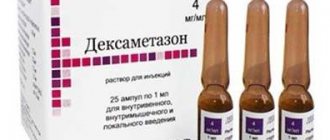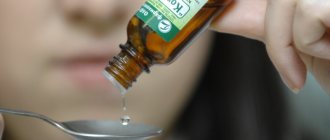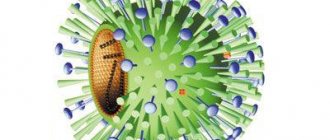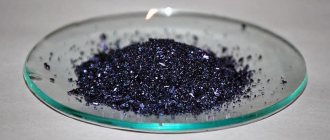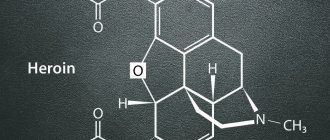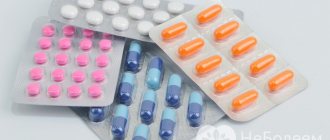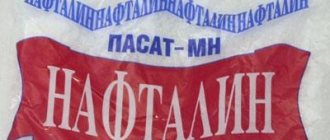Carbamazepine is an antiepileptic drug belonging to the group of vital drugs. It is characterized by a low absorption rate and slow distribution in the body, as a result of which the therapeutic concentration of the drug in the blood is formed with a delay, and the therapeutic effect does not appear immediately. To speed up the process, some patients take additional amounts of medication, which leads to an oversaturation of the body with the medication. Carbamazepine overdose is a dangerous condition that can provoke the death of the patient and develops for other reasons.
Indications
Carbamazepine is an active substance to which pharmaceutical manufacturers give trade names. The composition may include silicon dioxide, potato starch, magnesium stearate.
The main diagnosis for taking the medicine is epilepsy. Treatment with Carbamazepine Acri is also prescribed for trigeminal neuralgia, psychosis of the schizophrenic and affective type. It is classified as a tricyclic antidepressant.
The drug is given to older people to stimulate brain activity. Often without permission, as a cheap analogue of expensive drugs. As a result, the medicine that was expected to improve it has the opposite effect.
The tablets relieve neurological pain, for example, inflammation of the trigeminal nerve.
Carbamazepine poisoning
The medicine is absorbed into the blood quite quickly, and if taken three times a day, the maximum amount of the drug is achieved after 8-16 hours. In case of acute poisoning, the cardiovascular system is primarily affected. Externally, it is easy to determine an overdose of the drug: the patient feels a loss of strength, lethargy and apathy, he is drawn to sleep, in addition, his speech and motor skills are impaired, and his eyeballs move rhythmically and chaotically.
Already at this stage it is necessary to consult a doctor for help, because further consequences of damage to the nervous system will only worsen. Side effects of Carbamazepine manifest themselves as:
- loss of consciousness,
- drop in blood pressure,
- rapid heartbeat,
- pulmonary edema,
- hallucinations,
- seizures,
- epilepsy attacks,
- respiratory dysfunction,
- coma state.
All these symptoms occur against the background of gastrointestinal disturbances, stomach pain, nausea and vomiting, which are classic for poisoning.
Dosage
The drug is available in tablets. 1 tablet contains 200 mg of active substance. The dosage depends on the diagnosis. For epilepsy, monotherapy with a gradual increase in dose is recommended. Start with 200-400 mg per day and increase to 800-1200 mg, adding 200 mg each. The medicine should be added to the current treatment program in stages. The maximum dose is 1200-2000 mg per day.
Trigeminal and glossopharyngeal neuralgia is treated with a daily dose of 200-400 mg. Increase by 200 mg per day to 600-800 mg until the pain stops. Then the dose is gradually reduced.
For alcohol withdrawal, the average dose is 600 mg per day. In the first days of therapy, for a quick effect, give 1200 mg daily, combining detoxification, sleeping pills and sedatives.
Increased urination and pain in diabetes are relieved by an average of 600 mg of the substance per day.
For bipolar and affective mental disorders, the minimum dose is 400 mg, the maximum is 1600 mg. The dosage is increased during severe exacerbations. Maintenance therapy is carried out with a gradual increase in daily intake of the substance.
The medicine is taken in parts. The daily dose is divided into 2-4 parts. Take the tablets regardless of food so that the substance enters the body at regular intervals. If you are prescribed to take 400 mg per day, they are divided into two parts and taken one tablet every 10-12 hours.
Video: about this drug
Read more:
Rehabilitation after a heart attack, prevention of new attacks and care
List of the best antibiotics for food and alcohol poisoning
What should a woman do when pregnant?
Ways to eliminate swelling after mosquito bites
Vodka with salt for intestinal disorders
Article rating:
( 1 ratings, average: 2.00 out of 5)
Share with friends:
You may also be interested in:
Overdose of baclosan - consequences and lethal dose
Overdose of amitriptyline - what to do, symptoms and consequences
Zyrtec overdose - symptoms and first aid for children and adults
Drotaverine overdose (poisoning) - lethal dosage
Contraindications
The use of carbamazepine is contraindicated in the following cases:
- Sensitivity to tricyclic antidepressants;
- Substance intolerance;
- For liver and kidney failure;
- The drug is not compatible with alcohol;
- The product is not suitable as a substitute for an analgesic antispasmodic.
It is not used as a prophylactic agent for neuralgia in remission due to its slow action. The drug only accumulates pointlessly in the body, which can lead to poisoning.
Carbamazepine reduces concentration and affects blood composition. Therefore, treatment should be carried out under the supervision of a doctor. Periodically it is required to take a blood test to identify abnormalities in the content of red blood cells.
The doctor should monitor the use of the drug in elderly patients. At the first suspicious symptoms, it is better to reduce the dose.
Carbamazepine
Carbamazepine Carbamazepinum ( gen.
Carbamazepini)
5H-Dibenz[b,f]azepine-5-carboxamide
C15H12N2O
- Antiepileptic drugs
- Normotimics
298-46-4
White or almost white crystalline powder. Practically insoluble in water, soluble in ethanol and acetone. Molecular weight 236.27.
Pharmacological action – analgesic, antipsychotic, antiepileptic, anticonvulsant, normothymic, thymoleptic.
Blocks sodium channels in the membranes of hyperactive nerve cells, reduces the influence of excitatory neurotransmitter amino acids (glutamate, aspartate), enhances inhibitory (GABAergic) processes and interaction with central adenosine receptors.
Antimanic properties are due to inhibition of the metabolism of dopamine and norepinephrine. Anticonvulsant effect occurs in partial and generalized seizures (grand mal)
.
Effective (especially in children and adolescents) for relieving symptoms of anxiety and depression, as well as reducing irritability and aggressiveness (epilepsy). Prevents attacks of trigeminal neuralgia, reduces the severity of clinical manifestations of alcohol withdrawal (including agitation, tremor, gait disturbances) and reduces convulsive activity. In diabetes insipidus, it reduces diuresis and thirst.
Absorbed into the gastrointestinal tract, although slowly, but almost completely; food does not affect the rate and extent of absorption. Cmax with a single dose of a regular tablet is achieved within 12 hours. With a single or repeated administration of tablets, retard Cmax (25% less than after a regular tablet) is observed within 24 hours.
The retard form allows you to reduce daily fluctuations in plasma levels (determined after 1–2 weeks) without changing the minimum value of the equilibrium concentration. Bioavailability when taking retard tablets is 15% lower than after using other dosage forms. Binding to blood proteins is 70–80%.
In the cerebrospinal fluid and saliva, concentrations are created in proportion to the proportion of the active substance that is not bound to proteins (20–30%). Penetrates into breast milk (25–60% of plasma levels) and through the placental barrier. The apparent volume of distribution is 0.8–1.9 l/kg.
It is biotransformed in the liver (mainly via the epoxide pathway) with the formation of several metabolites - the 10,11-trans-diol derivative and its conjugates with glucuronic acid, monohydroxylated derivatives, as well as N-glucuronides.
T1/2 - 25-65 hours, with long-term use - 8-29 hours (due to induction of metabolic enzymes); in patients taking inducers of the monooxygenase system (phenytoin, phenobarbital), T1/2 is 8–10 hours. After a single oral dose of 400 mg, 72% of the dose taken is excreted by the kidneys and 28% through the intestines.
In urine, 2% of unchanged carbamazepine, 1% of active (10,11-epoxide derivative) and about 30% of other metabolites are determined. In children, excretion is accelerated (higher doses based on body weight may be required). The onset of anticonvulsant action varies from several hours to several days (sometimes up to 1 month). The antineuralgic effect develops after 8–72 hours, the antimanic effect after 7–10 days.
Epilepsy (excluding petit mal
), manic states, prevention of manic-depressive disorders, alcohol withdrawal, trigeminal and glossopharyngeal neuralgia, diabetic neuropathy.
Hypersensitivity (including to tricyclic antidepressants), AV blockade, myelosuppression or acute porphyria in history.
Category of action on the fetus according to the FDA -
D.
Dizziness, agitation, hallucinations, depression, aggressive behavior, activation of psychosis, headache, diplopia, accommodation disturbances, lens opacities, nystagmus, conjunctivitis, tinnitus, changes in taste, speech disorders (dysarthria, slurred speech), abnormal involuntary movements, peripheral neuritis, paresthesia, muscle weakness and symptoms of paresis, AV block, congestive heart failure, hyper- or hypotension, thromboembolism, renal dysfunction, interstitial nephritis, nausea, vomiting, increased levels of liver enzymes, jaundice, hepatitis, osteomalacia, sexual dysfunction , moderate leukopenia, thrombocytopenia, hematopoietic disorders, hyponatremia, multiorgan delayed-type hypersensitivity reactions, exfoliative dermatitis, lupus-like syndrome (skin rash, urticaria, hyperthermia, sore throat, joint pain, weakness), Stevens-Johnson syndrome, Lyell syndrome, anaphylactic reactions.
Incompatible with MAO inhibitors. Increases the hepatotoxicity of isoniazid. Reduces the effects of anticoagulants, anticonvulsants (hydantoin derivatives or succinimides), barbiturates, clonazepam, primidone, valproic acid.
Phenothiazines, pimozide, thioxanthenes increase CNS depression; cimetidine, clarithromycin, diltiazem, verapamil, erythromycin, propoxyphene reduce metabolism (the risk of toxic effects increases).
Reduces the activity of corticosteroids, estrogens and estrogen-containing oral contraceptives, quinidine, cardiac glycosides (induction of metabolism). In the presence of carbonic anhydrase inhibitors, the risk of osteogenesis disorders increases.
Symptoms:
disorientation, drowsiness, agitation, hallucinations and coma, blurred vision, dysarthria, nystagmus, ataxia, dyskinesia, hyper-/hyporeflexia, convulsions, myoclonus, hypothermia; respiratory depression, pulmonary edema; tachycardia, hypo-/hypertension, cardiac arrest accompanied by loss of consciousness; vomiting, decreased colonic motility; fluid retention, oliguria or anuria, changes in laboratory parameters: hyponatremia, possible metabolic acidosis, hyperglycemia, increased muscle fraction of creatinine phosphokinase.
Treatment:
induction of vomiting or gastric lavage, administration of activated charcoal and saline laxative, forced diuresis. To maintain airway patency - tracheal intubation, artificial respiration and (or) the use of oxygen.
In case of hypotension or shock - plasma expanders, dopamine or dobutamine; in case of seizures - administration of benzodiazepines (diazepam) or others.
anticonvulsants (in children, increased respiratory depression is possible; with the development of hyponatremia, fluid restriction, careful intravenous infusion of isotonic sodium chloride solution. When severe poisoning is combined with renal failure, renal dialysis is indicated.
There is no specific antidote. It is necessary to anticipate a re-intensification of the symptoms of overdose on the 2nd and 3rd day after its onset, which is associated with the slow absorption of the drug.
Inside.
Before starting and during therapy, regular blood (cellular elements) and urine tests and monitoring of liver function indicators are recommended.
Prescribe with caution if there is a history of heart, liver or kidney diseases, hematological disorders, increased intraocular pressure, latent psychoses, inadequate response to external stimuli, agitation, diseases characterized by mixed convulsions, in old age, drivers of vehicles and persons operating the machinery. Treatment should not be stopped suddenly. Women are advised to take additional folic acid (before or during pregnancy); In order to prevent increased bleeding in the last weeks of pregnancy and in newborns, vitamin K can be used.
Go
Source: https://www.rlsnet.ru/mnn_index_id_1214.htm
Symptoms
According to the international register of medicines ICD-10, carbamazepine poisoning belongs to the group of poisonings with sedatives, anticonvulsants, hypnotics and antiparkinsonian drugs. Intoxication does not manifest itself as a state of intoxication.
The path of medicine to the brain passes through the stomach, intestines, and liver. The kidneys excrete the substance. The drug affects functions such as vision, muscle reflexes, joints, neurons. Therefore, the manifestations of overdose have formed a long list.
Nervous system response:
- Chronic fatigue;
- Voluntary muscle contractions;
- Uncontrolled tongue movements, licking;
- Shifty eyes;
- Deterioration of joint mobility;
- Lack of taste sensations.
In addition, impulses from internal organs do not reach the brain.
Mental disorders are observed. The patient becomes depressed and is susceptible to visual and auditory hallucinations. Anxiety, aggressiveness, and disorientation accompany an overabundance of the substance.
Digestive tract reaction:
- Thirst;
- Diarrhea;
- Nausea, vomiting;
- Inflammation of the pancreas;
- Inflammation of the oral mucosa.
An overdose of the drug causes hepatitis. Damage to the liver leads to skin reactions. Lupus and dermatitis develop. Hair loss and increased sweating are noted.
Respiratory function is difficult due to shortness of breath. Inflammatory processes develop into pneumonia.
Heart disorders:
- Blood pressure surges;
- Tachycardia;
- Arrhythmia;
- Slowing heart rate;
- Stagnation of blood in the heart;
- Blood clots in blood vessels.
Heart failure impairs oxygen supply to tissues, causing fainting. Fluid is retained in the body. A person suffers from edema and weight gain. Stagnant fluid contains toxins that have not left the body due to liver and kidney dysfunction. Hence vomiting, nausea, diarrhea, headache.
Hormonal suppression causes imbalance, disrupting bone structure. The consequence is fragility, fractures.
Clinical picture of overdose
Carbamazepine poisoning primarily affects the state of the central nervous system, cardiovascular and respiratory systems:
- Central nervous system: suppression of functions is manifested by confusion, agitation, loss of orientation, blurred vision (blurred), involuntary eye movements. The patient's speech becomes unintelligible and pronunciation is impaired due to damage to the speech apparatus. Hyperreflexia is observed, later – suppression of reflexes. Convulsions, psychomotor disturbances, sudden contraction of muscles or individual areas, decreased body temperature, and dilated pupils may occur.
- Respiratory system: the functions of the respiratory organs are inhibited, pulmonary edema is possible.
- CVS: poisoning contributes to tachycardia, increased or decreased blood pressure, and loss of consciousness due to cardiac arrest.
- Gastrointestinal tract: vomiting, delayed digestion, decreased activity of the muscles of the colon develop.
- Musculoskeletal system: development of rhabdomyliosis due to the toxic effects of carbamazepine.
- Urinary system: retention of urine, decrease in its volume, failure to enter the bladder, excess accumulation of water in the body.
- Increased allergic reactions in patients with hypersensitivity to carbamazepine.
Lethal dose
Determining the total lethal amount or dose of carbamazepine leading to the death of the patient depends on many factors and characteristics of the patient’s body, and the properties of concomitant medications. The instructions for the drug indicate that adults are allowed in some cases to take no more than 1.6 g of the drug. Exceeding the dosage prescribed by the doctor can cause carbamazepine intoxication with subsequent death.
What to do
Symptoms of carbamazepine overdose may be associated with an underlying disease. But it is a mistake to consider headaches and dizziness to be a consequence of epileptic seizures and, on this basis, to increase the dosage. Therefore, it is important to know about the specifics of the drug’s action and side effects. The attending physician should warn about this.
Elderly patients should take the medicine under the supervision of a physician. When the first minor symptoms appear, the dose should be reduced. With progressive deviations, the patient will only be helped in a hospital.
First aid
There is no neutralizer for carbamazepine. What to do in case of poisoning:
- Flushing the intestines is the only effective remedy. Give an enema several times until clear water comes out.
- Take sorbents - they will prevent the spread of the drug. Activated carbon is suitable.
- Laxatives will remove toxin particles collected by sorbents.
First aid will remove symptoms for 2-3 days, but will not cure. The absorbed drug will continue to act. Manifestations of intoxication will return.
Treatment
Resuscitation procedures will be carried out in the hospital. If breathing is difficult, artificial ventilation is performed. Cleansing the kidneys using hemodialysis is not an effective method, nor is intravenous fluid administration. Hemosorption with activated carbon will help cleanse the blood of toxins.
Treatment of poisoning in the clinic:
- If there is a sharp drop in blood pressure, dopamine is administered;
- Seizures are relieved with benzodiazepine;
- Heart failure is neutralized with sodium bicarbonate;
- In case of swelling of the respiratory tract, intubate.
They are brought out of a coma using cardiac stimulation. After resuscitation, a blood test is performed to determine:
- Drug concentration;
- Changes in liver enzyme levels;
- Level of leukocytes and erythrocytes.
Based on the amount of substances, the doctor will determine the degree of poisoning and prescribe subsequent treatment.
First aid
There is no specific antidote to the drug. Therefore, it is necessary to be attentive to changes in the patient’s well-being. Deterioration of the condition while taking the drug requires calling an emergency doctor. Before doctors arrive, it is necessary to remove the remaining drug from the body as quickly as possible.
If the patient is conscious:
- the stomach is washed to remove the drug with vomit;
- activated carbon or other sorbent is given to bind the toxins of the drug;
- a cleansing enema is performed.
Poisoning with Finlepsin requires clear actions to alleviate the patient’s condition. After first aid is provided, the patient is sent to hospitalization for further treatment.
Consequences
A dose exceeding the prescribed norm leads to irreversible damage. Death cannot be ruled out.
The big picture
Consequences of carbamazepine overdose:
- Apathy;
- Depression;
- Lost coordination;
- Disorientation;
- Refusal to eat;
- Headache;
- Increased pressure;
- Heartache;
- Edema;
- Cramps.
You need to note the time when a new symptom appeared. If after prescribing a drug, it is likely that the change in the patient’s condition is influenced by the drug. Analyzes will help determine exactly.
Death
The lethal dose exceeds 2000 mg per day. The doctor prescribes a high dosage in emergency cases - with frequent grand mal epileptic seizures, exacerbations of mental disorders, when delay is fraught with death. In other cases, increasing the dose of the drug entails an unjustified risk.
Often patients take more tablets on their own because they do not feel their effects and want to recover faster. This leads to irreversible changes in organs. Causes leading to death:
- Damage to the heart muscle;
- Pulmonary edema;
- Coma;
- Failure of the liver, kidneys;
- Stroke.
The slow action of carbamazepine misleads doctors and patients. The diseases against which the drug is indicated have not been fully studied. Their manifestations are individual, as is the body’s reaction to the presence of a chemical substance in it. Therefore, treatment with carbamazepine requires the attention of the doctor and close people to the patient.
Drug intervention
Intravenous administration
In the toxicology department, intensive therapy is carried out, which is aimed at restoring the functions of the body systems. First of all, the concentration of hydroxycarbamazepine in the blood serum is determined in the laboratory and measured over time until it decreases.
To relieve pathological symptoms, drug therapy is carried out:
- repeated gastric lavage;
- intravenous administration of saline solutions to restore kidney function;
- administration of drugs that stimulate cardiac activity if changes appear on the ECG;
- antibiotics according to indications;
- hepatoprotectors – to improve liver function;
- To relieve convulsive syndrome, benzodiazepine drugs are prescribed.
Important! According to indications, hemosorption (blood purification) can be performed. If the patient is in a severe unconscious state, resuscitation measures are carried out (cardiac stimulation, artificial ventilation).
To whom is the pharmaceutical recommended?
Carbamazepine is a fairly effective drug, which allows it to be used in a number of different cases. Prescribed for the following pathologies:
- epileptic seizures;
- neuralgic lesions of the nerves (glossopharyngeal and trigeminal) the cause of which is unknown;
- excessive production of urine in case of diabetes insipidus;
- acute manic disorders;
- in concomitant treatment of alcoholism to eliminate withdrawal symptoms;
- with partial seizures, followed by fainting;
- to relieve pain caused by neuropathies in patients with diabetes;
- to eliminate convulsive seizures of the tonic-clonic type.
Carbamazepine is taken exclusively orally with the required volume of water.
Carbamazepine poisoning
The drug Carbamazepine works well for people suffering from elliptical seizures. The product has distinctive characteristics - it is slowly absorbed into the body and distributed throughout the tissues.
The drug concentration reaches its maximum after 24 hours. Therefore, the patient should exercise caution when consuming large dosages. The cause of carbamazepine poisoning is often the patient's failure to comply with the doctor's prescription. If the conditions for taking the drug are violated and the maximum permissible dose is exceeded, a person experiences signs of severe poisoning.
Prevention
To prevent poisoning, do not neglect a number of rules:
- Before taking, carefully study the instructions.
- Do not leave Carbamazepine in places accessible to the child.
- Do not take expired medicine.
- Follow the prescribed dosage.
- Do not exceed the duration of the treatment course.
- Do not prescribe the remedy yourself.
- During therapy, intraocular pressure is monitored, as well as the biochemistry of urine and blood.
Even if you are allowed to increase the number of tablets, do this gradually, eliminating the risks of intoxication. Remember, illiterate use can cause death.
Practitioner. She graduated with honors from Vitebsk State Medical University in 2012 with a degree in general medicine. She was awarded a certificate of honor for her achievements in her work.
Contraindications
It is prohibited to take if you have:
- hypersensitivity to ingredients;
- anemia;
- leukopenia;
- AV block;
- acute porphyria;
- alcoholism;
- liver failure;
- inhibition of blood circulation in brain tissue;
- prostate hyperplasia;
- increased intraocular pressure.
Prescribe with caution to elderly patients. Concomitant use with MAO inhibitors is prohibited.
It is unacceptable to drink alcohol during the course. In addition, the drug reduces attention, so it is undesirable to drive a vehicle.
If the medicine is recommended for a woman planning a pregnancy or already pregnant, treatment is carried out comprehensively with the use of folic acid.
Intoxication therapy
There is currently no antidote therapy for the treatment of carbamazepine poisoning. That is why in case of intoxication you will need to urgently consult a doctor. If an overdose of carbamazepine occurs, gastric lavage and repeated administration of a sorbent (activated carbon), which can interrupt the absorption of the drug from the gastrointestinal tract, will be required.
If therapy is ineffective, when the serum concentration of carbamazepine continues to increase, the occurrence of drug bezoars can be suspected. Experts recommend monitoring ECG to track changes in the complex. If its duration exceeds 100 ms, then sodium bicarbonate will be required. Epileptic seizures can be controlled with benzodiazepines.
A decrease in blood pressure and the development of shock will require the administration of plasma expanders or dopamine. It is also necessary to maintain patency of the airway, which will require tracheal intubation while performing artificial respiration. If severe poisoning occurs in a person with kidney failure, then kidney dialysis must be prescribed. If poisoning occurs in a child, doctors may resort to blood transfusions in conjunction with supportive therapy. It is important to constantly monitor the functioning of the heart, kidneys, and body temperature.
In case of intoxication with carbamazepine, hemodialysis and forced diuresis will not be effective. It is important to remember that 2-3 days after taking an excessive dose of the drug, overdose symptoms may re-intensify, so constant monitoring by a doctor will be required.
Medicinal properties
The medicinal properties of the drug are determined by the pharmacological characteristics of the active ingredient. When taken in adequate dosages, Carbamazepine:
- reduces the sensitivity of cells to glutamate, aspartate and other neurotransmitter amino acids that can have a stimulating effect on the nervous system;
- enhances interaction with adenosine receptors involved in physiological and metabolic processes in the brain and heart;
- inhibits the synthesis of dopamine and norepinephrine, which are responsible for the transmission of nerve impulses;
- stops convulsive activity and significantly reduces the severity of withdrawal states in alcohol dependence (unsteadiness of gait, tremor of the limbs, etc.).
Carbamazepine effectively fights depressive and anxiety disorders, attacks of aggression, and irritability. If indicated, the drug can be used to treat children and adolescents (as studies show, at this age, therapy with mood stabilizers and thymoleptics is most effective).
Note! Carbamazepine as an anticonvulsant and antiepileptic drug is effective only for severe partial and secondarily generalized seizures. For attacks of low intensity, treatment with Carbamazepine is not effective enough to make systemic therapy feasible.
